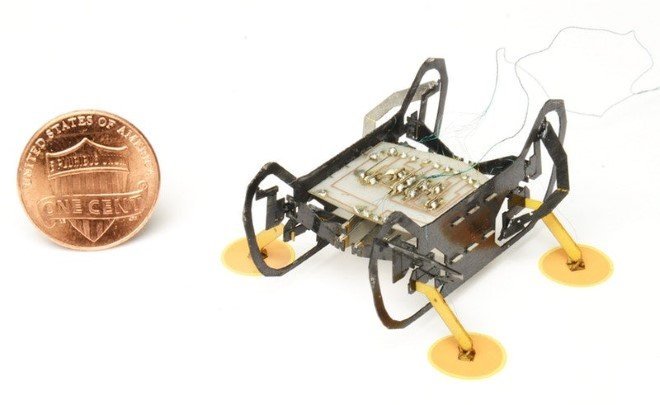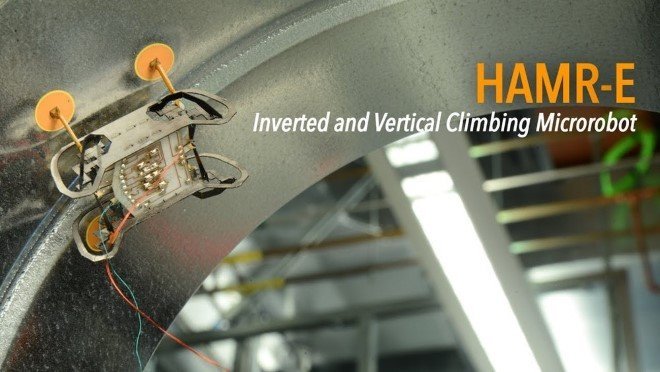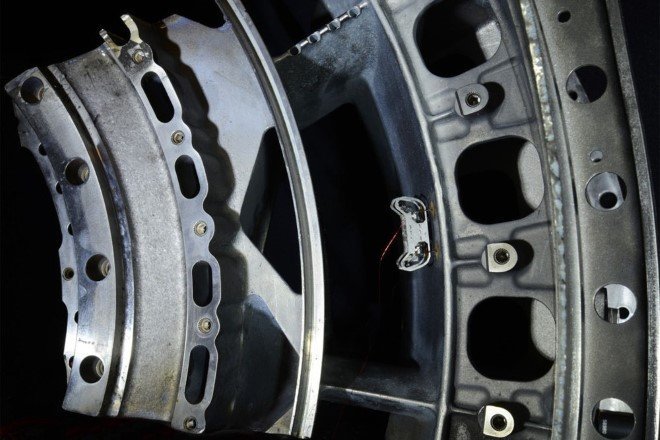Harvard’s tiny HAMR-E can climb through jet engines for routine inspection

It is costly and time-consuming process and very difficult to regularly inspect the machines and jet engines without taking them apart. A team has developed little, insect-like robots at Harvard’s Wyss Institute that can get inside and through machines to inspect them regularly to see if there’s something that needs fixing it can then be pulled out.
The latest model is known as Harvard Ambulatory Micro-Robot Electro-adhesion (HAMR-E). It is based on the team’s previous creation, the HAMR. These little four-legged robots move around like insects, and the new version can go through the surface of water. The robots have new footpads to climb surfaces vertically and cling upside down. The footpads stick to the metallic surfaces using electrostatic forces. Polyimide-insulated copper electrode is used to make the pads, and to lift each foot off the surface, the robots can switch off the electric field and turns it on as it takes the next step. The bots can climb the curved surfaces due to their flexibility, and it can be quite a handy skill inside a jet engine.
Sébastien de Rivaz, the first author of a study describing HAMR-E, say that instead of only moving back and forth on a flat surface, these robots have a whole new world that can step in and engage with, and can explore in three dimensions. It will one day be a savior for companies that invest a lot of time and money on inspecting hard-to-reach areas of the giant machines.
Along with the electro-adhesive footpads, the team also developed and designed new ankle joints for the improvement needed to let the robots roll in three dimensions. The ankle joints keep the orientation of the robots in line with the terrain. To make sure only one foot is lifted at a time, a new gait was needed to firmly stick the other three feet to the surface, so it does not fall off.
During the tests, the HAMR-E was able to walk over 100 steps vertically in a row without falling off from the upside-down surfaces. It also demonstrated how it would climb on uneven surfaces, around the curves of a jet engine with its footpads compensating by increasing the voltage of its electro-adhesion.
According to Robert Wood, corresponding author of the study, it is convincing that climbing robots of centimeter-scale are possible to made and can be used to explore and identify issues and blockages in any infrastructure, including buildings, engines, pipes, generators, and more.
The next step for the team is to introduce sensors to improve the climbing robot’s stickiness on surfaces and give the robot a payload so that it can conduct the inspections for which it is designed. However, it seems that the small robots will not be able to carry out the repairs, but they would save time and money by not disassembling machines that don’t require any work to be done.
The research was published in the journal of Science Robotics.
All Images: Courtesy of Wyss Institute at Harvard University
h/t: New Atlas

